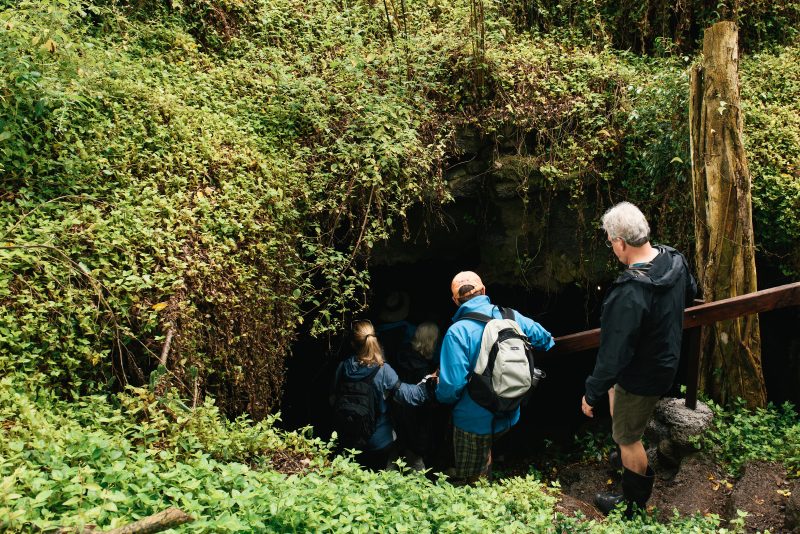AUTHOR Daniel Andino

CONSERVATION IN GALAPAGOS
How you can help with local efforts to Preserve the Galapagos
The Galapagos Islands are a remarkable and delicate ecosystem, home to tropical plants and wildlife not found anywhere else on Earth. Approaching these islands with the care and respect they deserve is essential to their preservation.

Photo credit via Yolanda Escobar for Ecoventura
When you travel with Ecoventura, you know that along with an authentic and memorable experience in the Galapagos, you can expect a commitment to local sustainability and conservation. It is our goal to provide you with a safe, comfortable, and unforgettable voyage, while simultaneously lessening our impact on this fragile environment.
How can you take a luxurious Galapagos cruise and have a small carbon footprint? Read on to find out how Ecoventura is making better environmental choices, and what you can do to help!
Photo credit via Yolanda Escobar for Ecoventura
What is currently being done
- A specialized system has been developed to make tourism work for the Galapagos, including regulating how many tourists visit each island every day. There is a rotating schedule of which island can have visitors, as well as a log of which trails have been used on each island, so that none are overrun. Our naturalist guides are rigorously trained to lead groups through these nature trails. They educate visitors on the flora and fauna surrounding them, as well as how they can leave a smaller footprint on the environment.
- Galapagos Conservancy is a huge ally in education, research, and keeping the public informed about sustainability on the Islands. Their Education for Sustainability Program just launched its first two Teacher Institutes this year, which provided more than 40 hours of rigorous training to 300 K-12 teachers in the Galapagos. And, their Giant Tortoise Restoration Initiative has tremendous news: After a severe decline in the local tortoise population, it is finally on the rise again. Thanks to a team of 70 park rangers and scientists from the Galapagos National Park (and the first comprehensive census of the giant tortoise population on San Cristóbal Island), it was determined that the total tortoise population is now at 6,700 individuals, up from only 500-700 in the early 1970s.

Photo credit via Yolanda Escobar for Ecoventura
- The Island of San Cristóbal, where we base our operation, partnered with energy company EOLICSA to create the San Cristóbal Wind Project. The project oversaw the installation of three 51-meter wind turbines and two sets of solar panels in 2007. The wind turbines have managed to cover 30% of the Island’s electricity needs, and replaced the use of 8.7 million liters of diesel fuel.
- The environmental impact of air travel is severely detrimental, so Galapagos Ecological Airport on Baltra Island is trying to reduce its footprint. The airport created the world’s first entirely environmentally sustainable terminal, using solar and wind energy to operate. 80% of the infrastructure was made from materials reclaimed from older buildings, and the airport’s water supply comes from its own desalination plant.
How Ecoventura is assisting the effort with eco-friendly tourism
- Way back in 1999, we at Ecoventura saw the need to reduce the negative influence tourism was having on the Galapagos, and began “greening” up our operation and equipment. Ecoventura has invested upwards of $500,000 to refurbish its fleet of yachts, including installing solar panels and wind generators on the Eric, the first hybrid yacht in the Galapagos. This offset carbon emissions and reduced our CO2 output by 10%. In 2006, Ecoventura became the first carbon neutral operation in the Galapagos (and Ecuador). Check out our 2011 Earth Cooler certificate.

- In 2006, Ecoventura established the Galapagos Marine Biodiversity Fund in partnership with the World Wildlife Fund. Together, we support environmental education and marine conservation by strengthening the ability of local communities to manage their vast natural resources.
- Ecoventura has become arecognized leader in responsible tourism to the Galapagos Islands because of its commitment to the ongoing sustainability of this fragile ecosystem.

What you can do to help
- By joining local nature or environmental groups, such as the Rainforest Alliance, World Wildlife Fund, or Conservation International, you are helping protect the environment worldwide. If you join the Galapagos Conservancy, you can help the Islands directly and ensure that they are preserved for future generations of adventure travelers.
- Ecology Project International (EPI) teaches local high school students in the Galapagos about conservation and ecology-related issues, and the program has benefited over 600 students since 2003. Students spend 50 hours in the field, directly involved in conservation efforts concerning invasive species and the release of turtles into the wild.
- If providing supplies is more up your alley, join us in supporting Pack for a Purpose. Pack up to 5 lbs (2.27 kgs) of the supplies suggested on the website, bring these needed items with you to the Galapagos, and Ecoventura will collect and deliver supplies to students at the Alejandro Alvear School. All supplies benefit the local population living in the town of Puerto Baquerizo Moreano, San Cristóbal.

And while you’re on your Galapagos cruise…
– Use your towels for more than 1 or 2 days before requesting that they be cleaned.
– Refill your water bottles from our containers of purified water.
– Use the bio-degradable shampoo and conditioner provided in each cabin to help reduce your footprint.
– Take any packaging or trash back with you to the mainland, and do not leave it in the Galapagos.
Taking real steps to protect our environment is everyone’s responsibility. Learning about these issues and working towards a solution together can be a great first step. Ecoventura is happy to answer any questions you may have about environmental sustainability and conservation in the Galapagos.
Please feel free to email us for more information, or leave a comment below with your ideas about how you can reduce your own environmental footprint!


